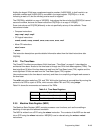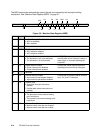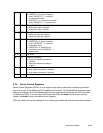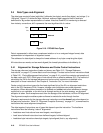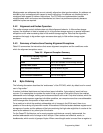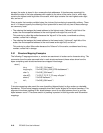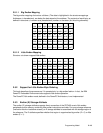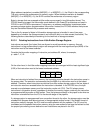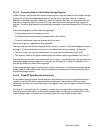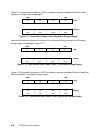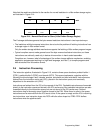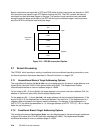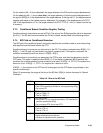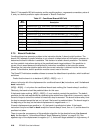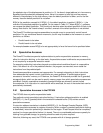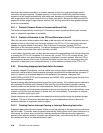
Programming Model 2-21
2.5.3.2 Accessing Data in Little Endian Storage Regions
Unlike instruction fetches from little endian storage regions, data accesses from little endian storage
regions are
not
byte-reversed between memory and the DCU. Data byte ordering, in memory,
depends on the data type (byte, halfword, or word) of a specific data item. It is only when moving a
data item
of a specific type
from or to a GPR that it becomes known what type of byte reversal is
required. Therefore, byte reversal during load/store accesses is performed between the DCU and the
GPR.
When accessing data in a little endian storage region:
• For byte loads/stores, no reordering occurs.
• For halfword loads/stores, bytes are reversed within the halfword.
• For word loads/stores, bytes are reversed within the word.
Note that this applies, regardless of data alignment.
The big endian and little endian mappings of the structure
s
, shown in “Structure Mapping Examples”
on page 2-18, demonstrate how the size of an item determines its byte ordering. For example:
• The word
a
has its four bytes reversed within the word spanning addresses 0x00–0x03.
• The halfword
e
has its two bytes reversed within the halfword spanning addresses 0x1C–0x1D.
Note that the array of bytes
d
, where each data item is a byte, is not reversed when the big endian and
little endian mappings are compared. For example, the character 'A' is located at address 0x14 in
both the big endian and little endian mappings.
In little endian storage regions, the alignment of data is treated as it is in big endian storage regions.
Unlike PowerPC little endian mode, no special alignment exceptions occur when accessing data in
little endian storage regions.
2.5.3.3 PowerPC Byte-Reverse Instructions
For big endian storage regions, normal load/store instructions move the more significant bytes of a
register to and from the lower-numbered memory addresses. The load/store with byte-reverse
instructions move the more significant bytes of the register to and from the higher numbered memory
addresses.
As Figure 2-11 through Figure 2-14 illustrate, a normal store to a big endian storage region is the
same as a byte-reverse store to a little endian storage region. Conversely, a normal store to a little
endian storage region is the same as a byte-reverse store to a big endian storage region.



